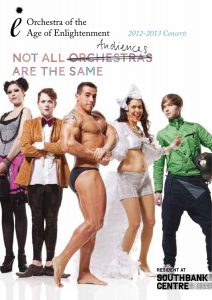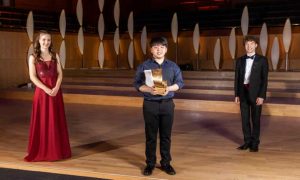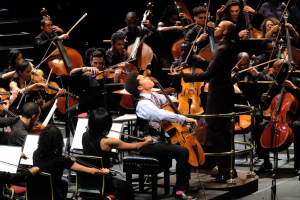This post is written by Martin Cullingford.
Nobody wanted to have to address the challenges the past pandemic year posed classical music. Artists were unable to work – with a huge and devastating impact both artistically and financially – and audiences were unable to be participants through their presence in live music-making. But the desire – need – to address all these elements proved the spring of creativity as many ensembles and artists at first felt their way online, initially with home-grown events shared on social media, and later increasingly high-end and high-tech broadcasts.
This was going on before Covid, of course, but not on such a scale, and not driven to the same extent by artists as opposed to by organisations. But what was two years ago innovative and experimental, and one year ago became a means to still be an active musician in a locked-down world, is now a permanent part of the performance landscape. For just as a year of working from home will have a significant and sustained impact on the office environment, so too will a year of online concerts on musical life. Live music will of course return, but much of the benefits of streaming, having been recognised, will continue, and have already taken firm root.
Some examples: a major record label and an artists agency have established permanent online platforms for online concerts, ones which blend elements of recording and live events such as finite catch-up time for viewing and pay-per-attendance tickets. An online London vocal festival initially conceived to give choirs their first paid work in many months is now heading towards a fourth series, having made a substantial investment in technical infrastructure and having forged a returning global audience. An established festival which, unable to perform to live audiences, took their events digitally into care homes and prisons, and now sees this as something on which to build.
But an important question (and opportunity) with all this is not just how and whether online streaming can reach larger audiences, but whether it can reach new and different audiences too. Whether it just reaches existing classical music audiences by looking and feeling familiar, or whether it uses the moment to harness the accessibility and neutrality of the online environment and further push at the perceptions of classical music that so many live initiatives, from carparks in Peckham to nightclubs in Berlin, have successfully done in recent years.
And if it does, who pays for it? Initially, much of this online activity was free, but that can’t continue indefinitely – music-making of this quality costs, and audiences need to accept that and recognise that value. But once you charge for it, how do you continue to reach those new audiences so easily, and ensure online concert halls don’t find themselves with the same challenges that physical ones have in persuading new audiences to enter in and give them a try? Classical music has a huge opportunity here – but how does it avoid taking the problems of perception and access identified in the physical world, and simply reimposing them in the virtual one?
Martin Cullingford is Editor of Gramophone magazine.


 Eleanor Shaw defines marketing strategy as ‘an organisational approach that is organised around the consumer, with a keen focus on identifying customer needs, wants and demands and matching these to features and benefits of the products contained within an organisation’s portfolio.’ (Shaw 2012:321). How well do we as classical musicians manage this process, bearing in mind the constraints indicated above?
Eleanor Shaw defines marketing strategy as ‘an organisational approach that is organised around the consumer, with a keen focus on identifying customer needs, wants and demands and matching these to features and benefits of the products contained within an organisation’s portfolio.’ (Shaw 2012:321). How well do we as classical musicians manage this process, bearing in mind the constraints indicated above?




